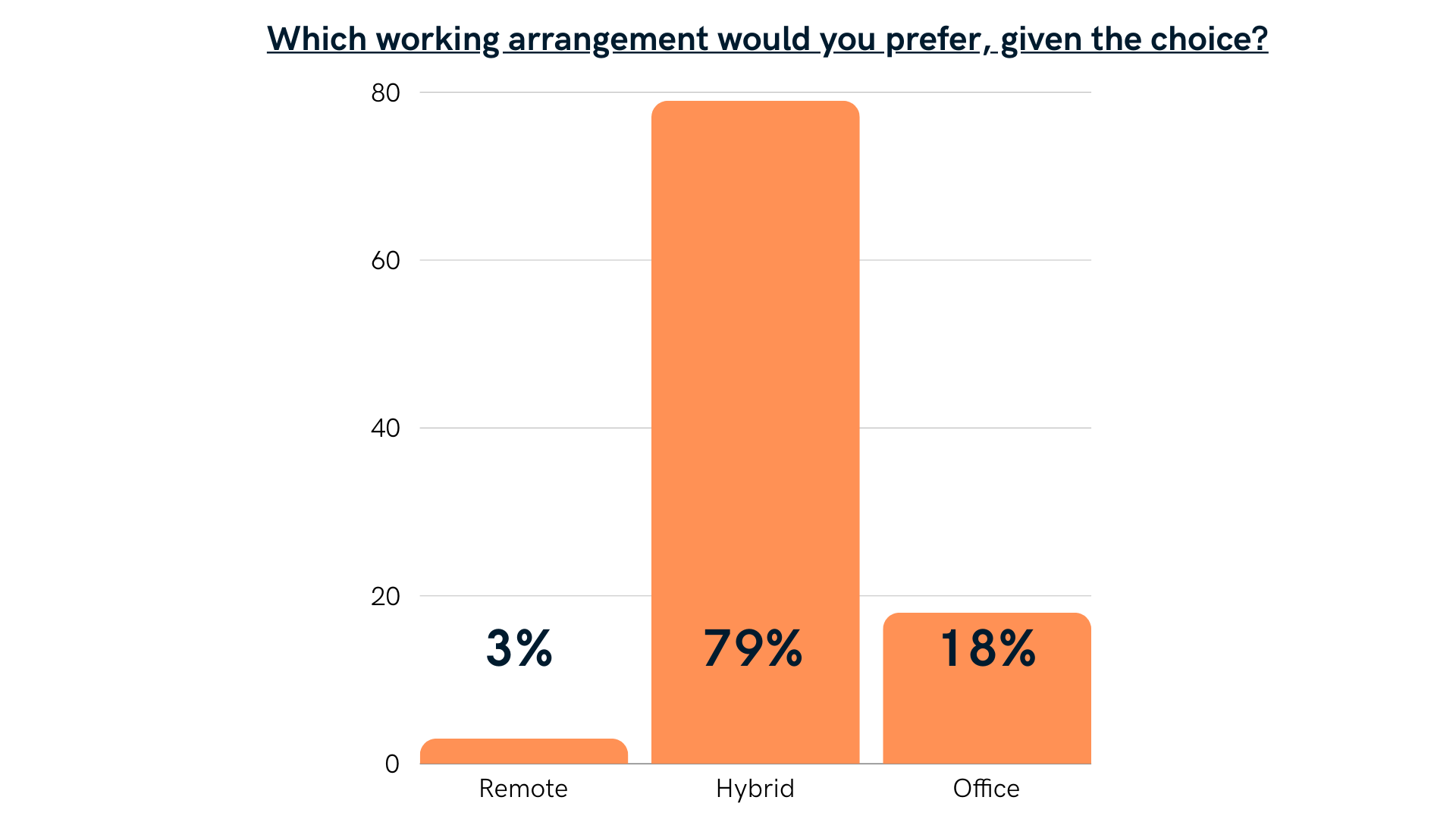What Do Female STEM Graduates Want? Remote, hybrid or ‘Return to Office’?

As the workplace continues to evolve, shaped by the impact of the pandemic, a recent study among female STEM students and graduates sheds light on their expectations and preferences for their first graduate job. With the widespread shift in workplace norms in recent years, will graduates expect to work from home from the outset? Or will they actually want to be in the office?
Most organisations have now embraced hybrid or flexible working arrangements, but some have recently begun to encourage or even enforce RTO (‘Return To Office’). The attempt to reinstate the pre-pandemic notion of the workplace is seen by some as old-fashioned, clinging to a past that no longer exists. So why is hybrid work so important to today’s workforce? And how can managers and leaders ensure that hybrid and/or flexible work works for their business as well as their employees?
Understanding the Numbers
STEM Women have undertaken research with more than 1200 female and non-binary students and recent graduates of STEM-related university courses, seeking to understand their expectations for their future careers. The findings show a definite preference for hybrid working for this new generation of workers.
A substantial 67% of the respondents to STEM Women’s 2023 survey anticipate their first job after university to offer a hybrid working model, blending days at home with days in the office. In contrast, only 32% expect a full-time office presence, and only 1% expected a fully remote setup. However, some respondents recognised that many jobs in STEM require in-person work such as laboratory or field work, or being on site in roles such as construction, engineering or healthcare.

Preferences versus Expectations
The survey also asked respondents which working arrangement they would prefer, given the choice. An overwhelming 79% expressed a preference for a hybrid working arrangement. Only 18% favoured a traditional full-time office setup, while 3% said they would prefer fully remote work. Some respondents even said they would not take a job that was fully in-person.
Many of the respondents assumed that ‘hybrid’ would also mean ‘flexible’, giving them the option to choose where and when to work, rather than having set days in the office. This highlights the importance of setting out what ‘hybrid’ means within your organisation.

Communication and team-building
The respondents were well informed on the benefits of working from home versus working in the office. They recognised the potential advantages of being office-based in facilitating communication and collaboration, which are particularly important for new hires. They also recognised that being present in the office can provide access to senior colleagues who could act as mentors or sponsors, potentially enhancing career progression.
But are these factors enough to support a full-time return to the office? Many organisations have adapted to remote or hybrid work and found ways to communicate and connect online, building a sense of belonging and community without the need for those often-referenced ‘water cooler moments’? And when it comes to progression, the idea of needing to be in the office harks back to old-school presenteeism that hardly fits with today’s inclusive workplaces and could marginalise those with caring responsibilities or health conditions.

Considering women’s health and caring roles
The respondents’ understanding of the benefits of remote work included the flexibility to manage childcare responsibilities, a reduction in commuting time, and the ability maintain a better work-life balance. Many respondents used the words ‘comfort’ and ‘comfortable’ to describe their home-working environment, with others saying this made them more productive and encouraged creativity due to a lack of distractions.
But what about onboarding new employees? There is a lot to be said for learning by proxy – something which is more difficult to achieve without spending time simply absorbing behaviours in an unstructured way. Hybrid, it seems, has the answers!
“Office vibes / work from bed”
Respondents described hybrid working as the “best of both worlds,” giving them the benefits of remote work alongside the social and collaborative aspects of office life. They emphasised the value of face-to-face interactions for deeper professional relationships and teamwork, while also appreciating the autonomy and comfort of remote work.
Workplaces have changed. Whilst the response ‘office vibes/work from bed’ might sound a little too comfortable, it’s important to remember that many people don’t have a home office or separate space to work from. It’s also a reflection of this that, post-pandemic, many organisations have become less formal, with employees feeling more able to bring their true selves to work – something which has contributed to more inclusive workplaces.

Implications for Employers
For those responsible for recruitment and onboarding, these insights underscore the importance creating an intentional workplace culture, adapting to the evolving needs and expectations of the workforce. With a clear preference for hybrid working, characterised by flexibility, collaboration, and autonomy, these aspiring women in STEM are ready to embrace each opportunity to do their best work.
Tips for hybrid work
1. Set expectations: whatever your approach, make sure it’s clear and everyone knows about it so policies can be applied fairly.
2. Lead by example: if you want people in the office, you need to be in the office. Demonstrate boundary-setting and set examples for good work/life balance.
3. Make the office a nice place to be – this doesn’t mean pool tables and beanbags, it’s about making sure employees have the equipment they need to work in the office and access to suitable spaces for different tasks (collaboration, deep work, client calls etc).
4. Decide how you measure contributions: dedication no longer means getting to the office before 8am and staying as long as possible. Various methods of measuring WFH productivity have been tried and tested, with the majority concluding that outputs are more important that mouse-clicks.
5. Make in-office time worthwhile – use this time to allow people to build connections in an organic way (no ‘forced fun’ please!), to collaborate, generate ideas and problem-solve. Sitting alone in a cubicle won’t build company culture!
6. Respect that one size doesn’t fit all – your team will be made up of introverts, extroverts and ambiverts, neurodiverse and neurotypical, parents and carers, pet owners, people with disabilities and mental health conditions, those who live locally and those who travel miles into work, and a whole other range of differences unique to your workforce.
Building an intentional culture in 2024 means recognising individual needs and trusting your team to do their jobs, whilst facilitating meaningful connection and collaboration. Embracing hybrid working models can not only attract top talent but also create a more inclusive and productive business.
